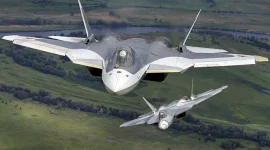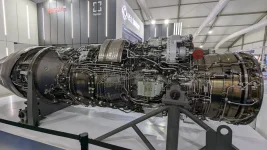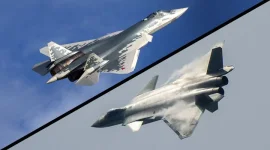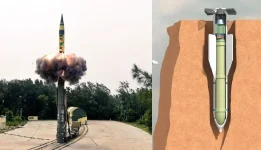- Views: 5K
- Replies: 25
India's aspiration to build a fighter jet fleet capable of rivaling China's rapidly advancing air power is facing a critical challenge: over-reliance on Hindustan Aeronautics Limited (HAL).
Defence analysts emphasize the urgent need for India to cultivate at least two to three additional aviation giants to compete effectively in the fighter jet race.
While HAL has a long and respected history in aerospace and defence manufacturing, it is currently overstretched and lacks the manpower to execute multiple fighter jet programs at the pace required to keep up with China.
HAL has been the cornerstone of indigenous aircraft production in India, including the Tejas Light Combat Aircraft (LCA). However, the company is currently juggling numerous projects, from fighter jets to helicopters, resulting in delays and extended timelines. The complexity of modern fighter jet development demands not only substantial investment but also a highly skilled workforce.
Analysts point out that HAL currently lacks the manpower needed to aggressively pursue major programs like the Advanced Medium Combat Aircraft (AMCA) and the Twin Engine Deck Based Fighter (TEDBF) at the speed necessary to match regional competitors.
With China rapidly modernizing its fighter jet fleet, India needs to accelerate its own development cycles. Establishing multiple aerospace companies could foster competition, innovation, and faster delivery of new aircraft.
These companies could work in parallel on different projects or collaborate on specific aspects of the same project, creating a synergistic environment that propels India's aerospace capabilities forward.
Each new company could specialize in a particular domain – one focusing on stealth technology, another on avionics, and another on propulsion systems – creating a comprehensive ecosystem for advanced aircraft development.
Distributing the responsibility of fighter jet programs across multiple entities would also mitigate the risk associated with relying solely on HAL. If one company encounters setbacks, others can continue their work unimpeded.
Analysts also stress the importance of firm commitments from the Indian Air Force (IAF) for newly developed aircraft. The IAF's initial reluctance to place large orders for the Tejas Mk1 due to perceived shortcomings should not be repeated with the AMCA and TEDBF. Firm orders would signal trust in these programs and encourage faster development.
Creating new aerospace giants would require significant government support, both financially and through policy initiatives. It would also necessitate attracting and training a large pool of skilled engineers and technicians.
This approach, while promising, is not without challenges. There's a risk of redundancy and inefficient resource allocation if not managed effectively.
Clear roles, collaboration frameworks, and shared resources would be crucial to avoid duplication and waste. Building new institutions to the level of HAL would also require time and considerable investment, both of which are precious in the current strategic context.
Despite these challenges, diversifying India's aerospace and defence industrial base is essential for achieving self-reliance and competing effectively in the rapidly evolving landscape of military aviation.
By fostering a competitive and dynamic environment, India can accelerate its fighter jet development programs and ensure its air force remains a potent force in the region.




